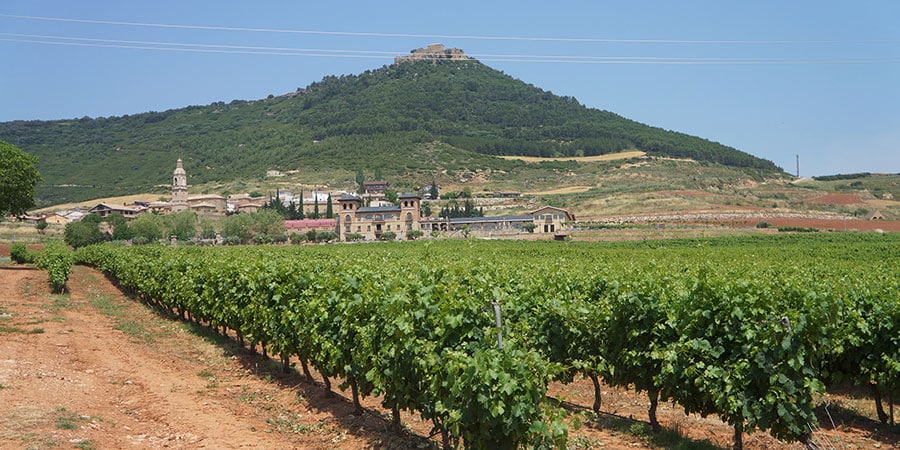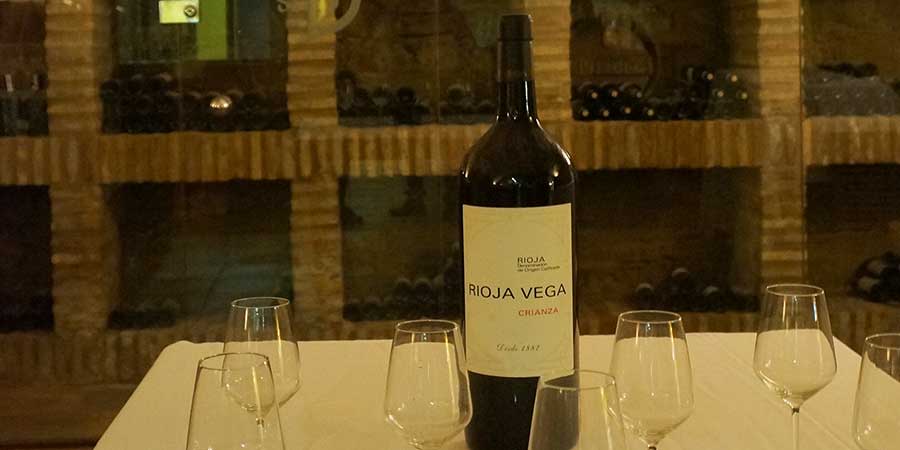La Rioja is a province in northern Spain, and its capital is the city of Logroño. It sits in the heart of the first half of the Camino Francés, also known as the French Way. This famous pilgrimage route passes directly through the region.
La Rioja is best known for its world-famous Rioja wines. The area’s winemaking tradition began with the Phoenicians in the 11th century BC. The Ancient Romans later established many vineyards. During the Middle Ages, pilgrims travelling to Santiago de Compostela helped spread the reputation of Rioja wines across Europe.
In the late 19th century, the phylloxera outbreak devastated French vineyards. This crisis led to major changes in Rioja. French wine investors turned to the region, helping to modernise production. Today, Rioja—alongside Sherry—is one of Spain’s most internationally recognised wines. The region lies south of the Cantabrian Mountains, along the Ebro River, and enjoys a continental climate. The mountains shield the area from harsh northern winds. Much of Rioja sits on a plateau about 460 metres above sea level. The region also takes its name from the small Oja River, or Río Oja.
Table of contents
The Three Main Wine Regions of La Rioja
La Rioja includes three key areas: Rioja Alta, Rioja Alavesa, and Rioja Baja.
Rioja Alta
Rioja Alta is known for its cool climate and higher elevation. This results in elegant, well-balanced wines. Grapes grow more slowly here, which helps preserve acidity and structure.
Rioja Alavesa
Rioja Alavesa lies within the Basque Country. It is located on the northern bank of the Ebro River. Wines from this area are full-bodied and rich in aroma. The soils are limestone-based, adding freshness to the wine.
Rioja Baja
Now called Rioja Oriental, this area has a warmer and drier climate. Wines here are fuller and have higher alcohol levels. Garnacha is the main grape grown in this part of La Rioja.

Rioja’s Protected Designation of Origin
Most of the land within the Rioja wine region lies in the autonomous region of La Rioja. However, their boundaries do not fully match. A small part of the Rioja wine area extends into southern Álava. This section lies on the left bank of the Ebro River. On the other hand, some land in the southern La Rioja region is not included in the wine designation. This protected status ensures that wines labelled “Rioja” meet strict quality standards. It also confirms the grapes come from the defined geographical area.
The Role of Oak in Rioja Wines
One of the most recognisable traits of Rioja wine is its use of oak barrels for ageing.
Historical Influence from Bordeaux
The practice of oak ageing began in the early 18th century. Winemakers from Bordeaux introduced it to the region. The goal was to improve wine preservation and add complexity. Over time, the vanilla and spicy notes from the oak became a signature of Rioja wines.
Evolution of Oak Usage
At first, winemakers used French oak. However, it became costly and hard to source. To save money, bodegas began buying American oak planks. These were then crafted into barrels by Spanish cooperages.
Traditional Barrel-Making Methods
Despite using American oak, many producers followed French techniques. The wood was split by hand instead of being sawn. Then, the planks were left to dry outside in the fresh air, not in a kiln. This process, known as “seasoning,” helps soften the wood and reduce harsh tannins. This careful method allows oak to enhance wine without overpowering it.

Modern Oak Ageing Techniques
Today, many winemakers blend both American and French oak barrels. This helps them create balanced flavours and aromas. Some also use different ageing periods to give wines more depth.
A Shift Towards Less Oak Influence
While oak is still important, a new trend is emerging. Some winemakers prefer to limit oak ageing. These wines are fresher and allow the grape character to shine through. This change reflects a broader movement in wine production. More producers now focus on vineyard expression and natural flavours.
La Rioja is a region rich in tradition and diversity. Its three sub-regions produce wines with unique styles and character. The use of oak has long been part of Rioja’s identity. Yet, modern methods now offer new expressions of these classic wines. From bold and fruity reds to elegant, oak-aged classics, Rioja has something for every wine lover.
For more information about this Camino de Santiago trip to La Rioja and other popular routes, please contact us. Use our Camino Planner to customise your journey and see your quote instantly.
